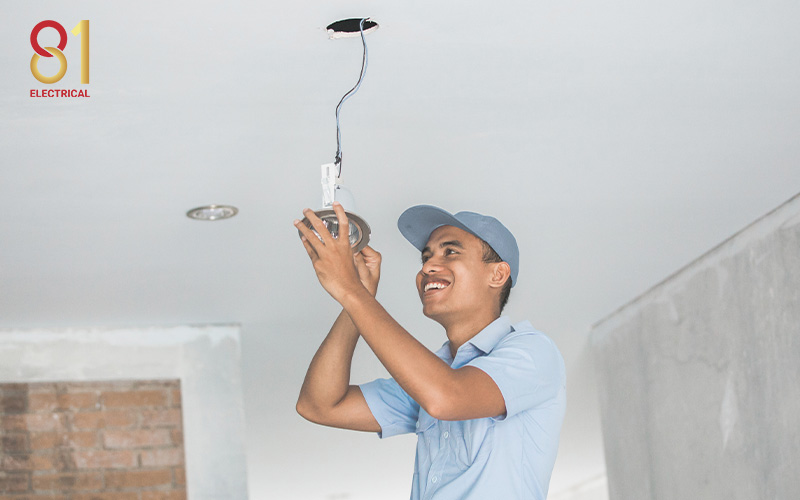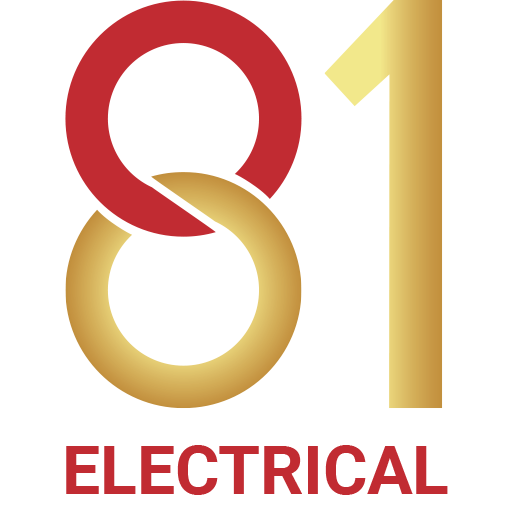False Ceiling Lighting Guide: How to Choose the Right Type and How Each Affects Electrical Load Planning

Key Takeaways:
- Why Should You Balance Lighting Types in Your False Ceiling Setup?
Read this false ceiling lighting guide to explore different lighting types and their distinct power demands. Failing to plan around their combined electrical load can lead to circuit overloads, flickering, or even safety hazards. By assigning proper zones, isolating high-demand fixtures, and calculating wattage accurately, you create a setup that is both visually effective and electrically sound.
- How Can You Future-Proof Your Lighting Installation?
A key part of this false ceiling lighting guide is planning not just for aesthetics, but also for long-term functionality. Hidden drivers, dimmers, or wiring faults can be difficult to access if maintenance wasn’t considered during installation. Ensure junction boxes are accessible, wiring paths are left unsealed where necessary, and the distribution board is clearly labelled to avoid major disruptions later.
Introduction
In Singapore, all lighting installations must meet SS 638 safety standards. These standards regulate electrical design, wiring, and load limits to ensure long-term safety and energy efficiency. This is especially important for false ceiling lighting, which conceals key electrical components like wiring, drivers, and dimmers. Without proper planning, homeowners risk overloaded circuits, energy waste, and expensive rewiring down the line.
This false ceiling lighting guide breaks down the different lighting types and how one affects your electrical circuit planning. At the same time, we also explore what to know before calling a professional for a light installation service in Singapore.
Why False Ceiling Lighting Needs Thoughtful Planning
False ceilings are often used to conceal wiring, create ambient moods, and hide ventilation systems. However, the concealed nature of the setup makes lighting load calculation and false ceiling maintenance access key considerations. Poor planning can lead to overheating, inaccessible faults, or mismatched dimmers.
If you’re new to electrical renovations, this false ceiling lighting guide will help you ask the right questions and avoid common pitfalls during your lighting upgrade.
What Are the Different Types of False Ceiling Lighting?
Each lighting type serves a different function and has unique electrical demands. Knowing how to balance them ensures both visual comfort and optimal performance.
1. Ambient Lighting
Ambient lighting forms the base layer of illumination in any room. Common examples include LED ceiling lights like downlights or recessed panels. These lights often warrant their own circuit due to long usage durations. Keep the total load under 80% of the rated capacity for safety.
- Power Use: These lights typically run for hours and consume 6W–12W per unit
- Placement: Evenly distributed to ensure balanced brightness
2. Task Lighting
Task lights like pendant lights are for focused work. They are often installed over dining tables or under-cabinet LEDs in the kitchen. For better energy management and more targeted illumination, isolate these lights in a different zone.
- Usage: Periodic, high-intensity lighting
- Installation: May need separate switches or dimmers

3. Accent Lighting
Accent lights add drama or highlight features using LED strips or cove lighting. These may look subtle, but they contribute significantly to total wattage. So, take into account their load when calculating the total electrical capacity. Be aware of the added demand as it may cause circuit overloads, frequent tripping, or reduced lifespan of electrical components.
- Common Uses: Feature walls, ceilings, or pathways
- Wiring: Often overlooked but essential in electrical circuit planning
How to Calculate Lighting Load Safely?
If you’re installing 10 LED downlights at 10W each, that’s already 100W on a single circuit. Add dimmers or accent lights, and the load increases fast.
Here are a few things to note:
- Stay under 80% of a circuit’s maximum capacity
- Use dedicated circuits for dimmable or smart lighting
- Always check wattage compatibility between lights and transformers or drivers
- Use trailing-edge dimmers or ELV (Electronic Low Voltage) dimmers for flicker-free LED performance
Why Dimmers, Drivers, and Transformers Matter
Some LED ceiling lights require additional components to operate correctly. These elements must be factored into the electrical layout early, as they often require extra space above the false ceiling.
For example, smart lights need specific dimmer modules to prevent flickering, while low-voltage LEDs rely on electronic transformers for proper voltage regulation. So, avoid using the wrong dimmer or mismatching fixtures with their required components to prevent lighting issues or premature failures.
How to Plan for Future Maintenance?
A sleek false ceiling may look great today. But what happens when a driver fails or wiring needs upgrading? Let’s take a look at the necessary upkeep:
- Use junction boxes with accessible covers
- Keep key wiring paths unsealed where possible
- Ensure circuit labelling on the distribution board is accurate and specific (e.g. “Living Room Accent Lights”)
- Always plan with false ceiling maintenance access in mind
Why Engage a Certified Electrician
A well-designed false ceiling lighting setup combines beauty with electrical intelligence. By understanding the different lighting types and respecting the limits of your circuit system, you can avoid common pitfalls and enjoy a brighter, safer home. Bookmark this false ceiling lighting guide as a quick reference when planning your renovation or discussing your needs with an electrician.
More importantly, engaging a certified electrical service provider ensures that every aspect of your lighting installation is done efficiently. They are trained to comply with SS 638 standards, accurately calculate lighting loads, and design circuits that minimise risks such as overheating or short-circuiting. That said, you gain peace of mind knowing that all concealed wiring, circuit planning, and maintenance access points are properly executed.
Need help with light installations in Singapore? 81 Electrical is a trusted name for services that last. From lighting load calculation to wiring and fixture compatibility, our licensed electricians handle every detail with safety and precision.
Contact us for a quote.



